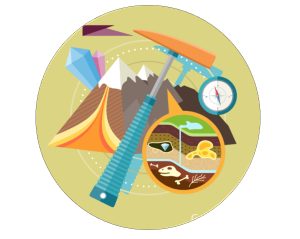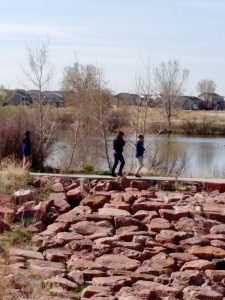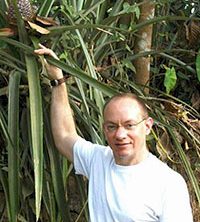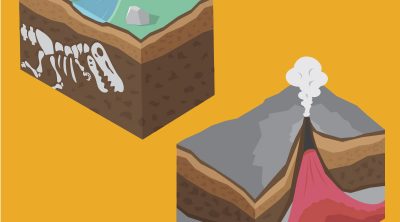While many associate geology with the study of rocks, it encompasses far more than that! Geology is the study of the earth, its physical and chemical composition, and its structure, history, and natural resources. In one of The Walking Classroom’s Science Career Series podcasts, you can get into geology Dr. Chris Tacker, the Curator of Geology at the North Carolina Museum of Natural Sciences. The podcast with Dr. Tacker is easily accessible, either via our website or on WalkKits in three of The Walking Classroom’s program offerings (4-#103, 5-#109, STEM-#48).
Having a bachelor’s, master’s, and a Ph.D. in geology, Dr. Tacker is definitely an expert on the topic! His main areas of interest include mineralogy, geochemistry, and, as he reveals in the podcast, volcanoes! In the podcast, Dr. Tacker discusses his experimentation, which focuses on predicting the gases involved in volcanic eruptions. He also reveals how a family trip led to his desire to learn more about geology, and shares recommendations for students who are themselves interested in the field.
 Geology is all Around Us
Geology is all Around Us
There is no escaping geology—it is indeed all around us, all around our homes and all around the globe as well. While Dr. Tacker verbally dissects the WalkKit, discussing its geological connections, it might be fun to share a snapshot of geology’s other household implications with your students, and then broaden the frame.
Get Rolling with Rocks
Whether rocks are the sole focus of your study or simply your starting point for a deeper dive into earth science, it’s easy to introduce your students to rock types and examples by presenting them with an overview of igneous, sedimentary, and metamorphic rocks via a website.
Once your students’ confidence builds and they are feeling like real rock hounds, challenge them with a rocks and minerals quiz.
On-site Activities and Adventures
Who doesn’t enjoy a hands-on activity? Follow up your students’ video viewing with a classroom rock classification activity! Or, head outside! With a topic like geology, a field trip need not involve a journey, but could be as simple as a step outside your school’s door. Oftentimes, the area around your school can provide you with what you need for simple experimentation or an in-the-field adventure!
Bubblings and Rumblings
 Beyond rocks and minerals, student interest in other geologic topics, such as natural disasters, never wanes! View a volcano video and introduce your students to volcanoes and the different types of volcanic eruptions. Then, let your students be the experts! Have them work independently or in a small group to create a print advertisement or to present an infomercial on their volcano type. Follow up with a quiz on volcanoes to assess their knowledge.
Beyond rocks and minerals, student interest in other geologic topics, such as natural disasters, never wanes! View a volcano video and introduce your students to volcanoes and the different types of volcanic eruptions. Then, let your students be the experts! Have them work independently or in a small group to create a print advertisement or to present an infomercial on their volcano type. Follow up with a quiz on volcanoes to assess their knowledge.
Similarly, introduce your students to the science behind earthquakes and engage them in an earthquake experiment or two to shake things up!
More Than Meets the Eye
As you can see, there are plenty of interesting topics to address in geology. In fact, it’s easy to bundle podcasts into a mini-series to build or support a unit on rocks, rumblings and resources.
- Geology (5-#74, STEM-#15, Complete-#132)
- Hot Springs and Geysers (4-#73, STEM-#18, Complete-#137)
- Layers of the Earth (4-#74, STEM-#15, Complete-#133)
- Rocks of the Earth’s Crust (4-#75, STEM-#17, Complete-#134)
- Volcanoes (4-#76, STEM-#19, Complete-#138)
- Deserts of the World (5-#73, STEM-#20, Complete-#139)
- Mountains (4-#77, STEM-#21, Complete-#136)
And why not bring it all together, using a culminating activity like Jeopardy to review?
With a topic like geology, there really is so much to explore, and there are plenty of peripheral activities to expand and support your students’ learning!





Leave a Reply